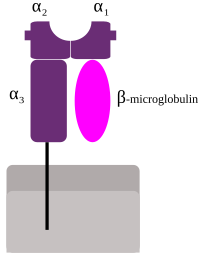
Photo from wikipedia
Protozoans of the genus Leishmania are the causative agents of an important neglected tropical disease referred to as leishmaniasis. During their lifecycle, the parasites can colonize the alimentary tract of… Click to show full abstract
Protozoans of the genus Leishmania are the causative agents of an important neglected tropical disease referred to as leishmaniasis. During their lifecycle, the parasites can colonize the alimentary tract of the sand fly vector and the parasitophorous vacuole of the mammalian host, differentiating into distinct stages. Motile promastigotes are found in the sand fly vector and are transmitted to the mammalian host during the insect blood meal. Once in the vertebrate host, the parasites differentiate into amastigotes and multiply inside macrophages. To successfully establish infection in mammalian hosts, Leishmania parasites exhibit various strategies to impair the microbicidal power of the host immune system. In this context, stage-specific class I nucleases play different and important roles related to parasite growth, survival and development. Promastigotes express 3’-nucleotidase/nuclease (3’-NT/NU), an ectoenzyme that can promote parasite escape from neutrophil extracellular traps (NET)-mediated death through extracellular DNA hydrolysis and increase Leishmania-macrophage interactions due to extracellular adenosine generation. Amastigotes express secreted nuclease activity during the course of human infection that may be involved in the purine salvage pathway and can mobilize extracellular nucleic acids available far from the parasite. Another nuclease expressed in amastigotes (P4/LmC1N) is located in the endoplasmic reticulum of the parasite and may be involved in mRNA stability and DNA repair. Homologs of this class I nuclease can induce protection against infection by eliciting a T helper 1-like immune response. These immunogenic properties render these nucleases good targets for the development of vaccines against leishmaniasis, mainly because amastigotes are the form responsible for the development and progression of the disease. The present review aims to present and discuss the roles played by different class I nucleases during the Leishmania lifecycle, especially regarding the establishment of mammalian host infection.
Journal Title: Frontiers in Cellular and Infection Microbiology
Year Published: 2021
Link to full text (if available)
Share on Social Media: Sign Up to like & get
recommendations!